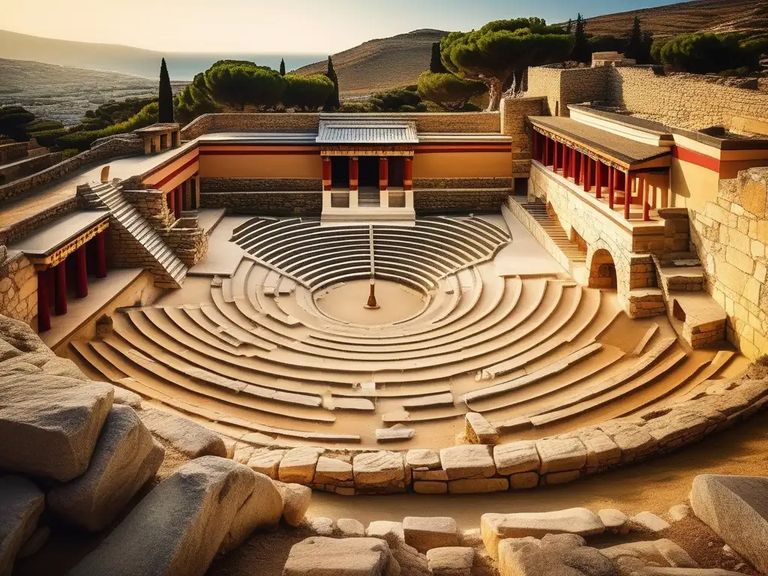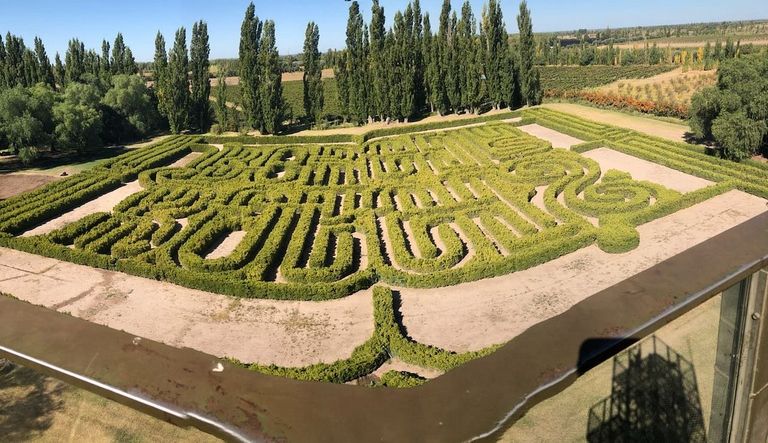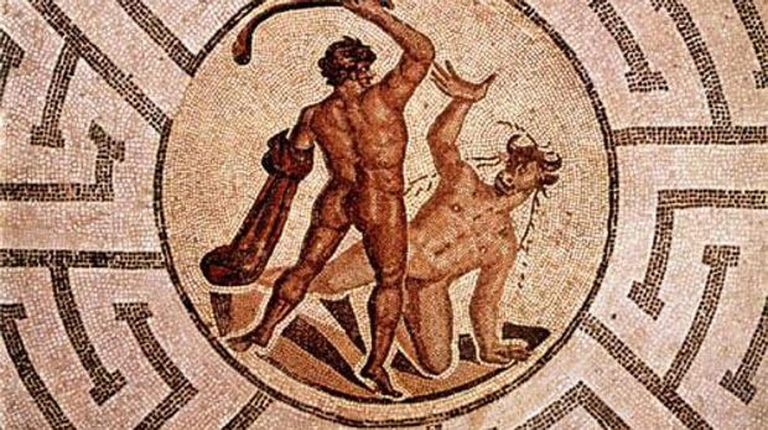
The labyrinth is a universal symbol that we find in all eras and civilizations, in all aspects of art and in everyday life.
Let us accept for a moment the premise that every human being has, step by step, once he has set out on the path… “walker, there is no path, the path is made by walking…” as Antonio Machado said.
Continuing its journey between interrupted paths, and lines that without beginning or end asked to be made or drawn again.
This is precisely why walking has become a way of encountering the world, the other, or ourselves. We cannot help but be deeply attracted by this new space.
A labyrinth in the popular imagination resembles a place where it is very easy to get lost.

El laberinto es un símbolo universal que encontramos en todas las épocas y civilizaciones. En todos los aspectos de arte y en la vida cotidiana.
Aceptemos por un momento la premisa que paso a paso el ser humano tiene, una vez emprendido el camino”…caminante, no hay camino, se hace camino al andar…” como decía Antonio Machado.
Continuando su recorrido entre senderos interrumpidos, y líneas que sin principios o fin pedían ser hechas o trazadas de nuevo.
Por esto precisamente el andar entonces ha sido una manera para encontrar el mundo, el otro o nosotros mismos. No podemos sino ser profundamente atraídos por este nuevo espacio.
Un laberinto en el imaginario popular se asemeja a un lugar en el cuál es muy fácil perderse.
The Labyrinth and its deep symbolism. / El Laberinto y su profunda simbología.
Metaphors are often accurate. In the popular imagination, a labyrinth is similar to a solar system. Or, in other words, to a place where it is very easy to get lost.
And in which finding something turns out to be an extremely complicated task.
When we talk about a labyrinth, in a metaphorical sense, we are referring to a problem that apparently has no solution.

Las metáforas suelen ser, en muchos casos, acertadas. Un laberinto en el imaginario popular se asemeja a un sistema solar. O a lo que es lo mismo, a un lugar en el cuál es muy fácil perderse.
Y en el cuál encontrar algo resulta una tarea sumamente complicada.
Cuando hablamos de laberinto, en un sentido metafórico, nos estamos refiriendo a un problema que no tiene, aparentemente, una solución.
The Mason's Labyrinth. / El Laberinto de la Masonería.

Fontanellato's Labyrinth of the Masons , strongly desired by Franco Maria Ricci , is in fact an allegory of the complexity of the world. A work whose intelligibility cannot be sustained by reason alone.
Hence, the shapes of the same are added, fused and confuse us. From above it looks like a fortress, a pulsating star enclosed by geometries. But from other perspectives it seems and is much more.
Intensely attracted to labyrinths, the Argentine writer Jorge Luis Borges always referred to them, especially when he wanted to reflect in his texts the complexity, the deceptiveness and the challenges of existence.
The Borgesian labyrinth symbolizes the transformative process of human experience, where the traveler is constantly confronted with destruction, but also with the creation of himself.
In 1977, the Italian editor Franco Maria Ricci promised his Argentine literary friend that before he died he would devote himself to the task of building an immense labyrinth, inspired by his aesthetic and narrative conception.

El Laberinto de la Masonería en Fontanellato, fuertemente deseado por Franco Maria Ricci constituye de hecho una alegoría de la complejidad del mundo. Una obra cuya inteligibilidad no se puede sostener con la unica razón.
De ahí que las formas del mismo se sumen, se fundan y nos confudan. Desde arriba se parece a una fortaleza, una estrella pulsante encerrada por geometrías. Pero desde otras perspectivas parece y es mucho más.
Atraído intensamente por los laberintos el escritor argentino Jorge Luis Borges siempre se remitió a ellos, Especialmente cuando quiso reflejar en sus textos lo complejo, lo engañador y lo desafiante de la existencia.
El laberinto borgeano simboliza el proceso transformador de la experiencia humana. Donde el viajero constantemente se enfrenta a la destrucción. Pero tambien a la creación de sí mismo.
En 1977 el editor italiano Franco Maria Ricci le promete a su amigo literato argentino que antes de morir se entregaría a la tarea de construir un inmenso laberinto, inspirado en su concepción estética y narrativa.
The first labyrinths. / Los primeros laberintos.
As a first example of a labyrinth, we cannot fail to mention the Cretan Labyrinth and the legend of the Minotaur, a monster that was half man and half bull imprisoned inside it and to whom young victims were offered.

Como primer ejemplo laberíntico no podemos dejar de mencionar el Laberinto de Creta y la leyenda del Minotauro. Un monstruo medio hombre y medio toro encarcelado en su interior al que se le ofrecían víctimas jóvenes.
The Cretan Labyrinth and the legend of the Minotaur. / El Laberinto de Creta y la leyenda del Minotauro.

The earliest labyrinth that can be accurately dated is on a clay tablet at Pylos, Greece. Accidentally preserved by the fire that destroyed the palace in 1200 BC, the front of the tablet holds records of goat deliveries to the palace.
The square labyrinth drawn on the reverse is clearly a scribble made by the scribe. It is interesting that this first example is found in the traditional home of King Nestor. The king, together with Menelaus, planned the fleet of ships for the siege and subsequent fall of Troy. This is how Homer relates it in the Iliad.
The depiction of a labyrinth on an Etruscan wine jar from Tragliatella, Italy, dating to the late 7th century BC, shows armed soldiers on horseback, running in front of a labyrinth with the word TRVIA (Troy) inscribed in the outer circuit.

El primer laberinto que puede ser fechado con exactitud, está en una tablilla de arcilla en Pilos, Grecia. Accidentalmente conservada por el incendio que destruyó el palacio en el año 1200 a. C., la parte delantera de la tablilla de mantiene los registros de las entregas de cabras al palacio.
El laberinto cuadrado dibujado en el reverso es claramente un garabato hecho por el escriba. Es interesante que este primer ejemplo se encuentre en el hogar tradicional del rey Néstor. El rey junto a Menelao planeò la flota de barcos para el asedio y posterior caída de Troya. Asì lo relata Homero en la Ilíada.
La representación de un laberinto en una jarra de vino etrusca de Tragliatella, Italia, que data de finales del siglo séptimo a. C., muestra soldados armados a caballo, corriendo delante de un laberinto con la palabra TRVIA (Troya) inscrita en el circuito exterior.
Source/Fuente: El Laberinto.

